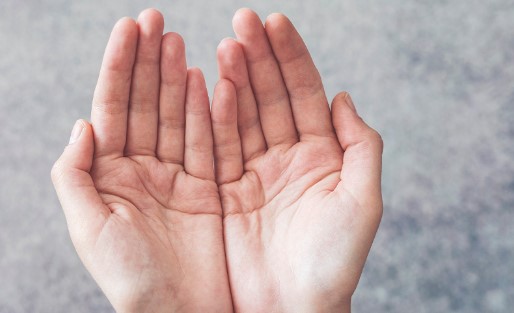hand:j-b5jgi3vqk= palm Anatomy and Function: Everything You Need to Know

Introduction to Hand Palm Anatomy
The human hand:j-b5jgi3vqk= palm is a marvel of biological engineering, perfectly designed to perform a myriad of tasks, from delicate artistic endeavors to powerful gripping actions. Understanding the anatomy and function of the palm is crucial for appreciating how it contributes to our daily lives. The palm, consisting of a complex arrangement of bones, muscles, nerves, and blood vessels, is responsible for the hand’s dexterity and strength. This article will delve into the intricate details of the hand palm, exploring its structure, common injuries, and how to maintain its health.
The Structure of the hand:j-b5jgi3vqk= palm
The hand:j-b5jgi3vqk= palm structure is an intricate network of bones, muscles, and nerves that work together to provide both strength and flexibility. This section will examine the bone structure, muscle groups, and nerve supply that make up the palm, highlighting how each component plays a critical role in the hand’s functionality.
Bones of the Palm
The palm’s skeletal structure is primarily composed of five metacarpal bones, which connect the fingers to the wrist. These bones are crucial for the hand’s ability to grip and manipulate objects. Each metacarpal bone is aligned with a finger, forming the framework that supports the palm. The arrangement and articulation of these bones allow for a wide range of motion, enabling the hand to perform tasks requiring precision and power.
Muscles of the Palm
The muscles in the palm are categorized into intrinsic and extrinsic groups. Intrinsic muscles are located within the hand and are responsible for fine motor movements, such as typing or playing an instrument. Extrinsic muscles, originating from the forearm, provide the strength necessary for gripping and lifting. The coordination between these muscle groups ensures that the hand can perform both delicate and forceful actions with ease.
Nerves in the Palm
The median and ulnar nerves are the primary nerves supplying the palm. The median nerve, which passes through the carpal tunnel, provides sensation to the thumb, index, middle, and part of the ring finger. The ulnar nerve supplies the little finger and the other half of the ring finger. These nerves also control the small muscles in the hand, allowing for intricate movements and a range of sensations from touch to pain.
Blood Supply to the Palm
The palm’s blood supply is delivered through a network of arteries and veins, primarily the superficial and deep palmar arches. These arteries ensure that the hand receives a steady flow of oxygenated blood, which is vital for muscle function and healing. The venous system in the palm helps remove deoxygenated blood and metabolic waste, maintaining the health and vitality of the hand tissues.
The Skin of the Palm
The skin on the palm is unique, characterized by a thick, tough layer that is rich in sweat glands but lacks hair follicles. This skin is designed to withstand friction and pressure, making it highly durable. The palm’s skin is also highly sensitive, packed with nerve endings that enable it to detect texture, temperature, and pain. The combination of toughness and sensitivity allows the palm to perform a wide range of tasks while providing crucial sensory feedback.
Functions of the Palm
The palm’s primary functions include gripping, holding, and manipulating objects, as well as providing sensory feedback that is essential for performing delicate tasks. The palm’s unique structure allows it to exert significant force when needed while maintaining the dexterity required for fine motor skills. This combination of strength and precision makes the palm an indispensable part of daily activities, from simple tasks like holding a cup to complex ones like writing or sewing.
Common Palm Injuries
Injuries to the palm are common due to its frequent use in various activities. These injuries can range from minor cuts and bruises to more severe conditions like fractures and ligament tears. Understanding the types of injuries that can affect the palm and how to treat them is essential for maintaining hand health.
Palm Fractures
Fractures in the metacarpal bones are among the most common injuries to the palm. These fractures can occur due to direct trauma, such as a fall or a blow to the hand. Symptoms typically include pain, swelling, and difficulty moving the fingers. Treatment often involves immobilization with a splint or cast, and in some cases, surgery may be required to realign the bones.
Sprains and Strains in the Palm
Sprains and strains occur when the ligaments or muscles in the palm are overstretched or torn. These injuries are often the result of sudden, forceful movements or repetitive strain. Symptoms include pain, swelling, and reduced grip strength. Treatment usually involves rest, ice, compression, and elevation (RICE), along with physical therapy to restore strength and flexibility.
Palm-Related Medical Conditions
Several medical conditions can affect the palm, leading to pain, stiffness, and reduced function. Carpal tunnel syndrome, Dupuytren’s contracture, and trigger finger are among the most common conditions that impact the palm. Early diagnosis and treatment are crucial to prevent long-term damage and maintain hand function.
Diagnosing Palm Conditions
Diagnosing conditions that affect the palm typically involves a combination of physical examination, imaging tests such as X-rays or MRI, and nerve conduction studies. These diagnostic tools help determine the extent of the injury or condition and guide appropriate treatment plans.
Treatment Options for hand:j-b5jgi3vqk= palm
Treatment for hand:j-b5jgi3vqk= palm varies depending on the severity and nature of the issue. Non-surgical options may include physical therapy, splinting, and medication to reduce inflammation and pain. In more severe cases, surgical intervention may be necessary to repair damaged tissues or relieve pressure on nerves.
Rehabilitation and Recovery
Rehabilitation is a critical component of recovery from hand:j-b5jgi3vqk= palm injuries or surgery. Physical therapy exercises are designed to restore strength, flexibility, and range of motion in the hand. Recovery times vary depending on the injury, but consistent rehabilitation can significantly improve outcomes and prevent future complications.
Preventing Palm Injuries
Preventing injuries to the palm involves a combination of proper ergonomics, exercises to strengthen the hand, and protective measures during high-risk activities. Understanding how to position the hand correctly and using tools designed to reduce strain can help minimize the risk of injury.
Ergonomics and the Palm
Ergonomics plays a vital role in preventing palm injuries, particularly for those who engage in repetitive hand movements, such as typing or manual labor. Using ergonomically designed tools and maintaining proper hand positioning can reduce strain on the palm and lower the risk of developing conditions like carpal tunnel syndrome.
Exercises to Strengthen the Palm
Regular exercises that target the muscles of the palm can help improve strength and flexibility, reducing the likelihood of injury. These exercises can include grip strengthening, finger stretches, and resistance training. Incorporating these exercises into a daily routine can enhance hand function and prevent common palm issues.
The Role of the Palm in Daily Life
The palm is central to many daily activities, from basic tasks like eating and dressing to more complex actions like using tools or playing musical instruments. The versatility of the palm makes it one of the most essential parts of the human body, enabling us to interact with the world in countless ways.
Cultural and Symbolic Aspects of the Palm
The palm holds significant cultural and symbolic meanings in various societies. It is often associated with concepts of healing, power, and communication. For example, in many cultures, the open palm is a symbol of peace and honesty, while the act of handshaking is a universal gesture of greeting and trust.
Read also: Unveiling the Power of green:_3xvwnrxyz4= background Technology
Future Developments in Palm Research
Advancements in technology and medicine continue to improve our understanding of the palm’s anatomy and function. Research into regenerative medicine, prosthetics, and minimally invasive surgery offers promising developments for treating palm injuries and conditions. These innovations are paving the way for improved outcomes and enhanced quality of life for individuals with palm-related issues.
FAQs
What are the primary functions of the hand palm?
The primary functions of the hand palm include gripping, holding, and manipulating objects, as well as providing sensory feedback for tasks requiring fine motor skills.
What are the common injuries to the palm?
Common injuries to the palm include fractures, sprains, strains, and conditions like carpal tunnel syndrome and Dupuytren’s contracture.
How can palm injuries be prevented?
Palm injuries can be prevented through proper ergonomics, strengthening exercises, and protective measures during high-risk activities.
What is the role of ergonomics in palm health?
Ergonomics plays a crucial role in palm health by reducing strain on the hand during repetitive tasks and preventing conditions like carpal tunnel syndrome.
How are palm fractures treated?
Palm fractures are typically treated with immobilization using a splint or cast, and in some cases, surgery may be required to realign the bones.
What exercises can strengthen the palm?
Exercises to strengthen the palm include grip strengthening, finger stretches, and resistance training, which help improve hand strength and flexibility.
Conclusion
The hand:j-b5jgi3vqk= palm is an extraordinary structure that plays a vital role in nearly every aspect of our daily lives. From its complex anatomy to its essential functions, the palm is integral to our ability to interact with the world. By understanding how the palm works and how to care for it, we can maintain its health and function for years to come.




